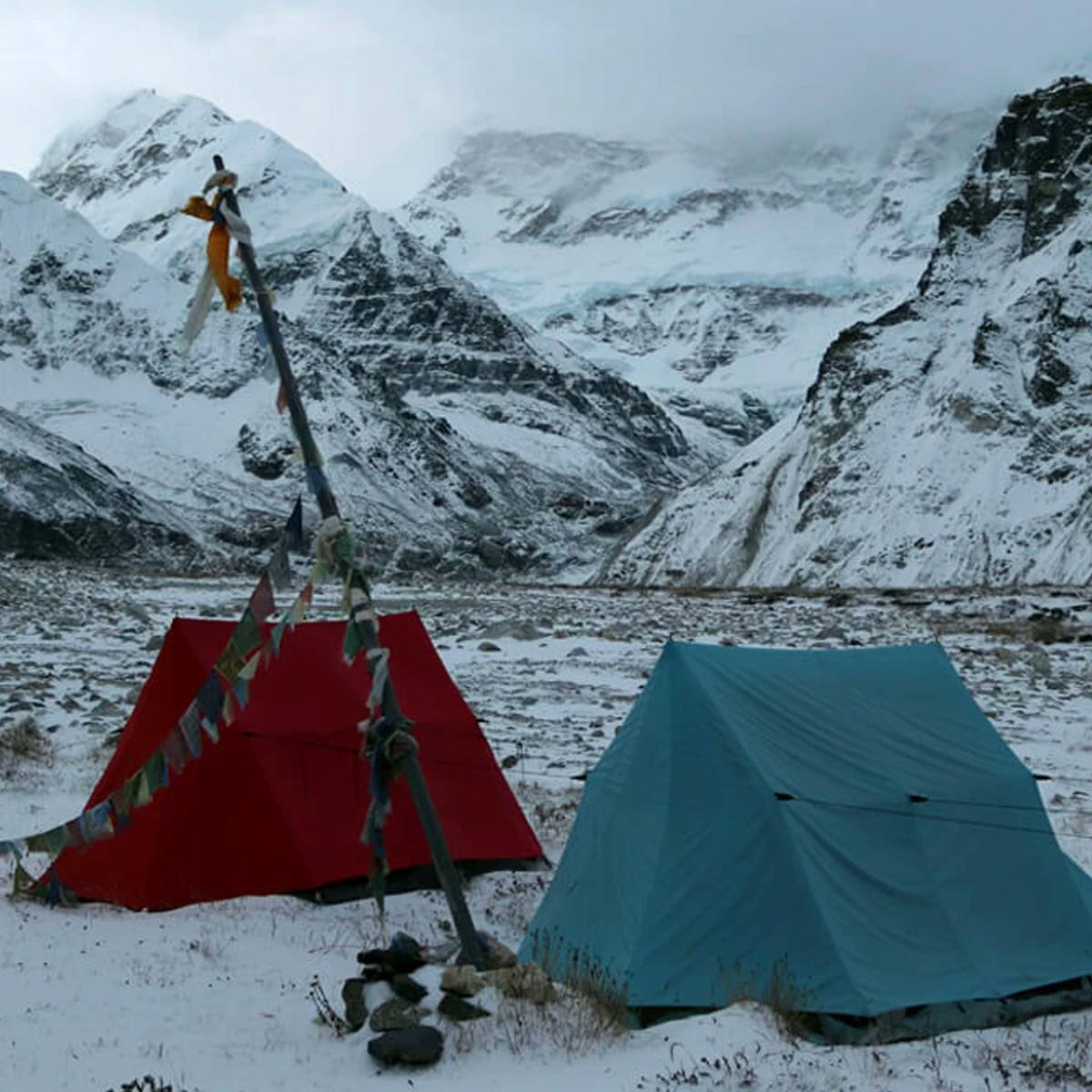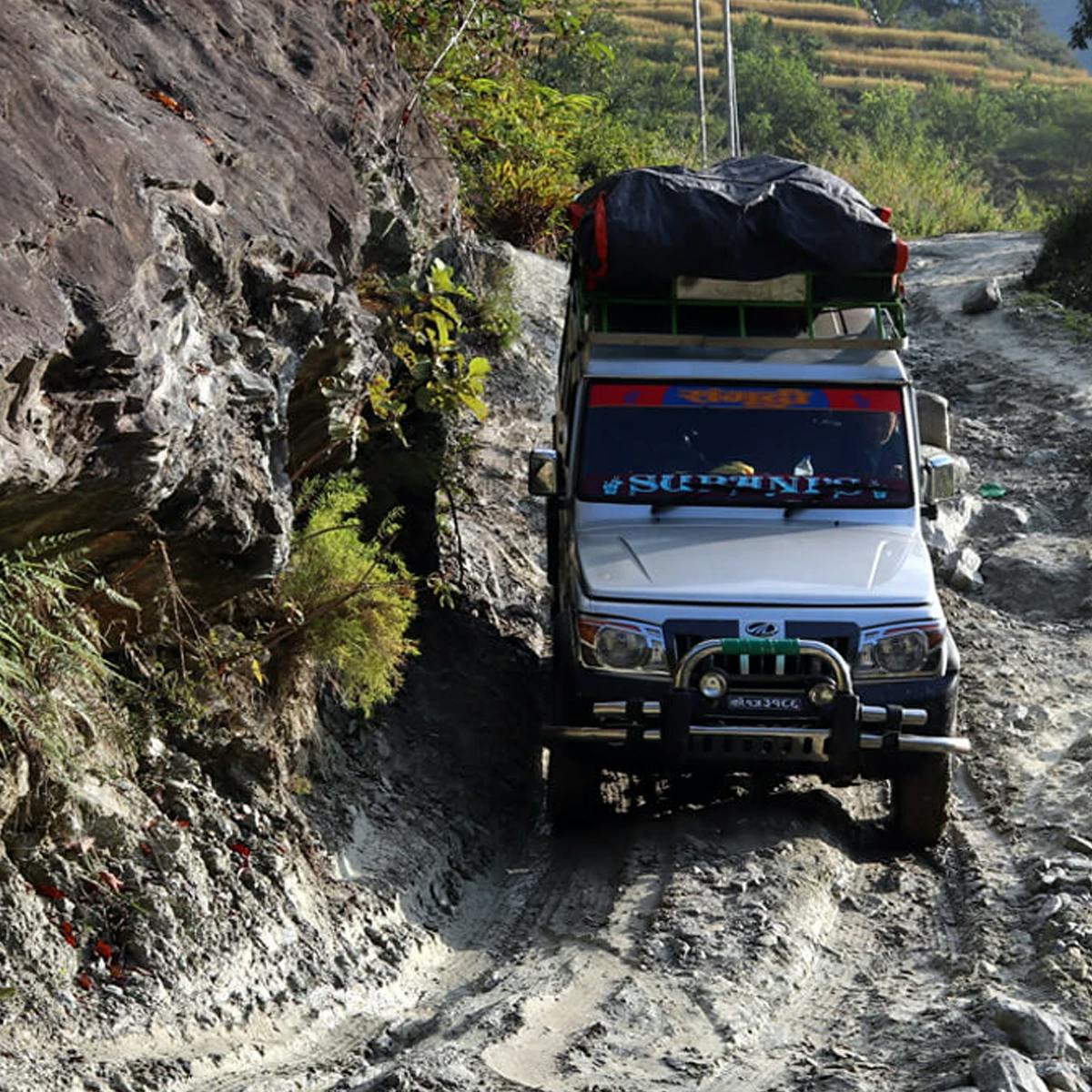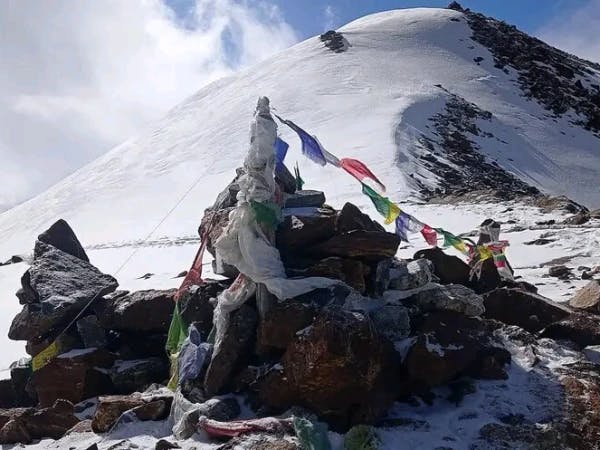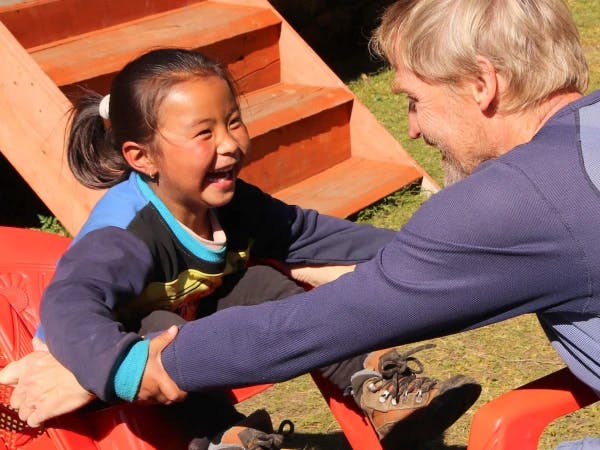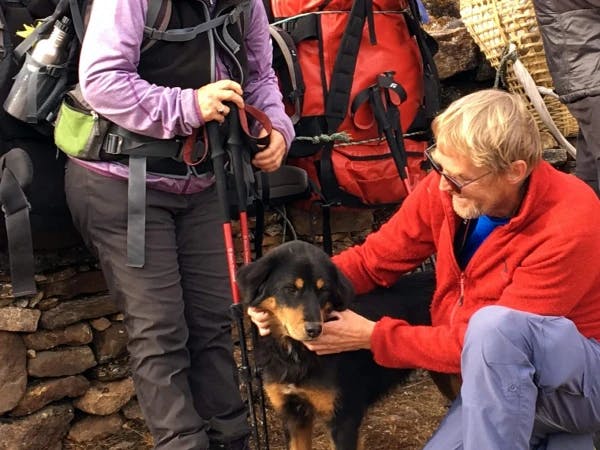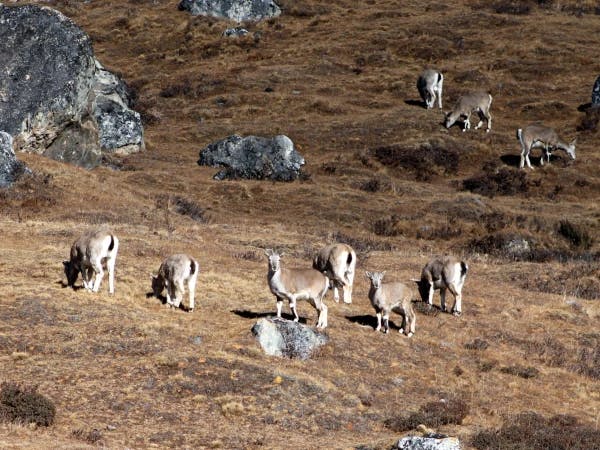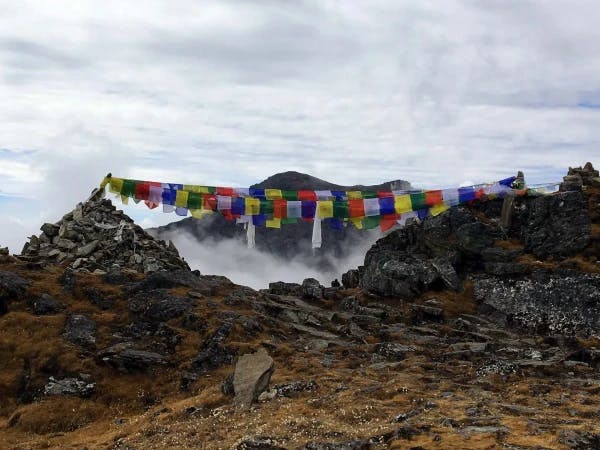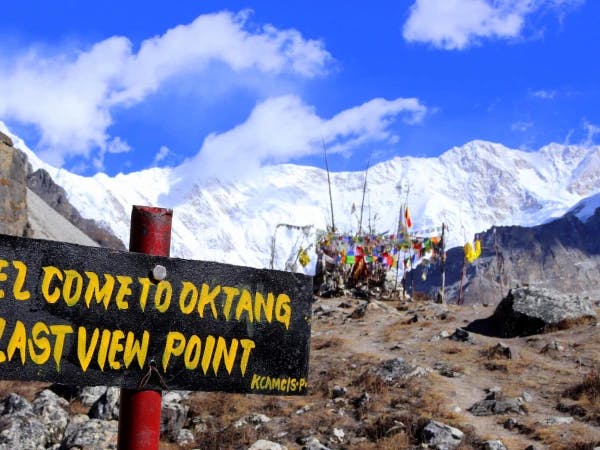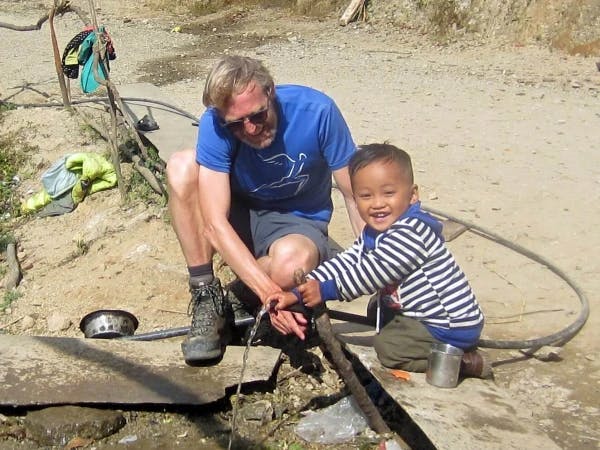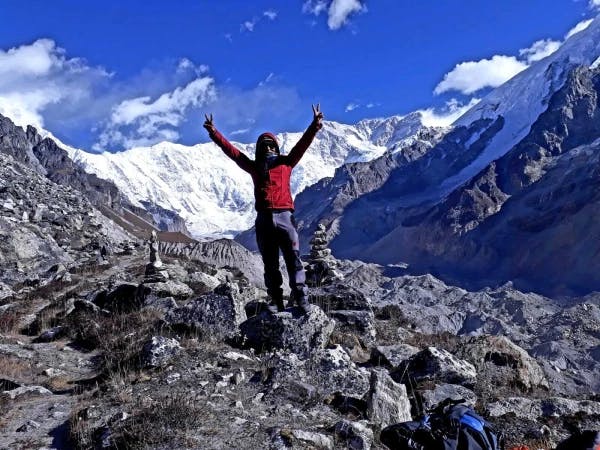Kanchenjunga Trekking is one of the most adventurous off-the-beaten Himalayan journeys to the far eastern part of Nepal, around the outskirts of the third highest peak in the world, Mt. Kanchenjunga (8,563m). Serving as the border to Tibet and the Indian state of Sikkim, this one of the eight-thousanders of the world explores the diverse landscapes of the region while the trekking route to here encircles around Mt. Kanchenjunga.
As the 22-day Kanchenjunga trek visits both the south and north base camps of the peak and the jaunting is throughout the encompassment, it is widely popular among adventurers as the Kanchenjunga Circuit Trekking, the dream destination of true expeditor seeking the raw Himalayan wilderness and authentic Himalayan lifestyle to observe, rooting mostly in Tibet.
Lying far away from the major tourist cities of Nepal, Kathmandu and Pokhara, the trip to Kanchenjunga, no wonder, is a golden opportunity to admire the pollutant-untouched natural beauty, making a way through the rich biodiversity, including verdant woodland, alpine meadows, and high-altitude plateaus, which are home to the region’s wide array of flora and fauna, along with the indigenous tribe people of the country: Rai, Limbu, and Sherpa, and others deeply appreciated for their warm and welcoming nature beside their genuine hospitality.
Throughout the journey, you will be in the presence of skyline-dominating mountain ranges such as Jannu (Kumbhakarna), Kabru, and Rathong, including the third tallest peak in the world, Mt. Kanchenjunga (8,586 m), while walking through the several typical mountain villages dotted beautifully in between the vibrant forests of birch, pine, and rhododendron that further feature thrilling rivers, waterfalls, green meadows, and of course glaciers, among which Yalung alone makes worth an effort.
Being a recent addition to the great Himalayan trekking map of Nepal, along with the exclusive tourism promotion in the country, the journey to Kanchenjunga also has a well-versed route with well-established teahouses and lodges. Hence, now is the time to get your backpack ready for an amazing traverse to one of the secret gems of the Nepalese Himalayas, Kanchenjunga.
Highlights
- Board a thrilling flight to and from Bhadrapur.
- Immerse yourself in the warming Himalayan culture and tradition of the Kanchenjunga region.
- Venture deep into one of the less-frequented great Himalayan trekking trails in Nepal.
- Summit not only one but two of the base camps of the third largest peak on the earth, Mt. Kanchenjunga.
- A golden chance to come across some of the common to rarest Himalayan flora and fauna, including the elusive snow leopard, Himalayan blue sheep, tahr, and red panda.
- Walk through the stunning Himalayan glacial lakes, dense woods, cascading waterfalls, and rich biodiversity.
- Traverse one of the major, highly restricted areas of the Nepalese Himalayas, etc.
What makes trekking to the Kanchenjunga Circuit special?
The adventurous rambling to the Kanchenjunga Circuit is a special and memorable experience of a lifetime, offering a not-to-miss opportunity to immerse oneself in the raw beauty and spiritual grandeur of the Kanchenjunga Trekking region, which once did not allow visitors at all until 1980, when the third highest peak in the earth, Mt. Kanchenjunga (8,586 m), was thought to be the tallest mountain range in the world up until mid 1800.
Today, the adventurous land of the Kanchenjunga comes under the Kanchenjunga Conservation Area. It requires a special permit card to venture around the realm, owning several highly restricted valleys and traditional villages sharing borders with Tibet and India, which all come together to make the trekking trail extremely special, promising you:
The awe-inspiring mountain views
The Kanchenjunga Circuit Trek offers unmatchable views of several majestic peaks, including Jannu Himal (7,710 m), locally known as Kumbhakarna, Kabru (7,412 m), Rathong, and others, while the third highest mountain in the globe, Mt. Kanchenjunga (8,586 m), dominates the horizon.
These snow-capped summits piercing the clouds look more graceful from several vantage points in the Kanchenjunga Trekking region, including Pangpema (the North Base Camp) and Ramche (the South Base Camp), raising dramatic sights to come across, especially during sunrise and sunset, which also offer incredible glimpses of various glacial lakes and valleys amidst the glorifying peaks reflecting in the turquoise water.
Trekkers are bound to be captivated by these alpine landscapes, creating unforgettable memories of moments of tranquility, reflection, and photography opportunities amidst the rugged beauty of the Himalayas during the journey to the Kanchenjunga Circuit.
The precious village of Kanchenjunga: Yamphuding
Yamhuding is the largest Tamang village where you spend overnight on the way to the Kanchenjunga Circuit trekking. It is noted for its traditional Tibetan stone houses, terraced farms, and vibrant Tibetan Buddhism culture. On the way to this specific vil,lage you can visit numerous centuries-old monasteries, Mani Walls, and Chortens at a higher altitude of 1,980 m (6,496 ft) above sea level.
Further, the village of Yamphuding is set in the natural awe of the Kanchenjunga Himalayas amidst the serene surroundings with panoramic views of snow-clad peaks, pristine glacial lakes, and dense forests in closer proximity to the Tibetan border, which is one of the leading causes of the whole Kanchenjunga being designated as the restricted zone of Nepal.
From the village, trekkers can embark on day hikes to nearby viewpoints or the village itself, which has a unique cultural and traditional charm and is one of the most popular stopovers for trekkers and travelers journeying to the Kanchenjunga Himalayas.
Unwind yourself in the flawless rich cultural heritage of the Kanchenjunga Trekking region
Along the trekking route leading to the Kanchenjunga Conservation Area to circumnavigate the circuit of Mount Kanchenjunga, numerous indigenous communities of Nepal exist, such as Rai, Limbu, Sherpa, and Tibetan people possessing distinctive ways of life, culture, traditions, and costumes who love celebrating every small to big event of life as a festival, such as Lhosar (the Tibetan Lunar New Year), Dashain, Tihar, Budha Jyanati, and many others, providing insight into the simpler yet enriching life of the mountainous locals.
These celebrations are held at a specific time of the year that you can also get to be part of if your trekking to Kanchenjunga coincides with one of the local festivals and ceremonies celebrated with great fervor when the region’s ancient monasteries, gompas, and chhortens are decorated with vibrant prayer flags, sometimes with flowers as well, creating an otherworldly ambiance fantastic for a spiritual awakening in the aromatic Himalayan town.
Spare some time to visit these cultural and religious monuments of the Kanchenjunga. To marvel at the intricate artwork, murals, and statues of Buddhist deities and symbols, along with a sampling of some of the special festively dedicated local cuisines, Kanchejunge is worth a visit.
The True Himalayan Expedition
The trekking Himalayan journey to Kanchenjunga is to one of the most remote and least tourist-frequented zones of Nepal, which further belongs to the restricted area of the country to preserve the regional true beauty of culture, heritage, and nature that you will get to explore in the 22-day trip to the Kanchenjunga Circuit, which might have long lost some of the widely popular trekking trails of Nepal such as the Everest Base Camp Voyage, Annapurna Circuit Odyssey, and others.
In addition, the Kanchenjunga region holds significant spiritual importance for the local communities, who consider the mountains and whole nature to be sacred and imbued with mystical energy, giving 100% effort to conserve its tranquility, and hence has retained its sense of solitude, providing its trekkers with a profound sense of awe, which has named it the real Himalayan expedition for having combined remote wilderness, jaw-dropping mountain scenery, and challenging terrain.
Demanding and thrilling terrain to the north and south base camp of Kanchenjunga
Yes, what makes the Kanchenjunga Circuit trekking route stand out among thousands of Nepalese Himalayan Trails is the visit to not only one but both of the base camps of Mount Kanchenjunga, called the North Base Camp (Pangpema) at an altitude of 5,413 m/16,870 ft above sea level, and the South Base Camp, locally named Yalung Base Camp at 4,700 m/15,420 ft, offering intimate exposure to the northern and southern faces of the Kanchenjunga Peaks, respectively.
Hiking to these base camps of Kanchenjunga involves traversing through varying terrains through alpine meadows and lush forests, which might be covered in snow during winter, alongside the rocky moraines passing by rural and inhabited areas, granting a great sense of isolation and adventure while you will have to make your way through steep ascents and descents.
Therefore, trekkers and travelers are expected to acquire some advanced physical and mental preparedness to meet the requirements for this part of the Kanchenjunga trekking, which is an exceptionally rewarding track on making it to the lap of the majestic Kanchenjunga Peak, providing everlasting views of the towering mountain summits in the pristine natural beauty surrounding you from everywhere.
The best 22 days Itinerary and route for trekking to Kanchenjunga
The trip to Kanchenjunga begins with an early morning flight from Kathmandu to Bhadrapur and a drive to Ilam, where you will spend the first night and head to Taplejung, serving as the gateway to the Kanchenjunga Trekking region of Nepal the very next day.
The official hike starts from Taplejung onwards, usually ascending through Chirwa, Lelep, Amjilosa, Gyabla, Ghunsa, Kambachen, Lhonak, the North Base Camp, which then descends to Ghunsa and again ascends to Sele Le, Cheram, and finally to the South Base Camp of Mt. Kanchenjunga.
Thereafter, the 22-day itinerary to trek the Kanchenjunga Circuit includes a downhill walk to Torongding, Yamphuding, Khebang, and Khamdime, to lastly catch a local bus, private jeep, or car to Bhadrapur, and the following-day flight back to Kathmandu.
This route to traverse the Kanchenjunga allows ample acclimatization days; being said, three separate rest days at Gumsa, Kambachan, and Cheram which much required before hoping for higher altitude, along with adequate exploration of the traditional valleys and several other cultural and historical landmarks of the region.
Furthermore, our top-level mountain experts carefully created the 22-day trekking itinerary to Kanchenjunga, providing a comprehensive experience that lets you enjoy walking through the classic Himalayan landscape, rich cultural heritage, and high-altitude wilderness. Much to your delight, this route can be adjusted as per the specific requirements of trekkers and travelers. Contact Ammonite Adventures and Treks for your personalized journey to the Kanchenjunga Himalayas.
The Kanchenjunga Expedition Cost
The cost of an adventurous trek to the Kanchenjunga can exhibit a notable variation based on several factors, such as the length of the trek, the route taken, the level of services you wish to relish, and the time of year you have chosen for your journey.
It can get very complicated to get the best suitable budget planning trekkers and trekkers by themselves and hence it is advisable to buy one of the packages from any of the trustworthy travel, tour, and treks operators in Nepal such, as Ammonite Adventures and Treks Pvt. Ltd.
We are offering a special group discounted price on the 22-day Kanchenjunga Circuit Trek, which can range anywhere from USD 2,000 to USD 5,000 per person, which is reasonably customized to cover expenses of all the trekking necessities to the Kanchenjunga, including the trekking permits and their fees, meals, accommodation, means of transportation domestically used during trek days, and mandatory guides and porter fees.


